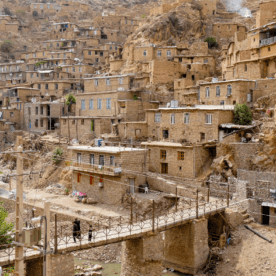The Osirion
In the rarely visited area of Middle Egypt (between Luxor and Cairo) is the site of Abydos, which is home to many forgotten wonders, but none so mysterious as the Osirion. The Osirion is so named because of its dedication to the Chthonic god Osiris. It was buried in antiquity and now lies beneath Egypt’s shifting water table. But why was it built and what was its purpose?
The Mythology

To have any chance of figuring out the mystery of the Osirion we must first understand the history, mythology and origin story of the god Osiris.
Egyptian religion tells us that Osiris was part of a family of gods associated with the beginning of the world. It all began when the scarab got Atum rose on the mound of creation (or ben ben stone) from the waters of chaos to create the world. He created Nut the sky goddess and Geb the god of the Earth, he noticed Geb and Nut who were also husband and wife spending too much time together, so he spat out Shu god of air and moisture to separate them. Before their separation Nut gave birth to Seth, the god of chaos and the desert, Nephthys, goddess of protection, Isis goddess of magic and Osiris. Osiris would become the first king of Egypt with his sister wife, Isis by his side.
His brother Seth was jealous and felt as though he had been exiled to the wastes of the desert. He wanted the throne, so he tricked Osiris into a magical box, slammed the lid closed and threw it in the Nile. He retrieved the box and then cut the dead Osiris into pieces and scattered his pieces all over Egypt. The head landed at Abydos which is why Abydos is the holy city or ‘cult centre’ for Osiris.
Isis being the goddess of magic gathered up all the pieces of her dead husband and temporarily brought him back to life long enough to conceive a child, Horus. She hid Horus among the reeds of the Nile until he was old and strong enough to take on his Uncle Seth for the crown of Egypt, which he did. Seth was killed or re-exiled to the desert depending on which version of the myth you read. Horus became king of Egypt and Osiris who could not be revived became God of the underworld and provided judgement to the dead.
The Theories
It is often the case that ancient buildings in Egypt are buried by the sands of time, and this has helped their preservation immensely. This has been the case with many popular sites in Egypt often featured on standard tours and which we all known like the Temple of Horus at Edfu and the Sphinx at Giza.
This is not the case with the Osirion, which seems to have been buried deliberately in antiquity or at least built at a lower level when compared with the contemporary buildings at the site. Reading the above, it seems likely that the reason for the temple’s burial is that Osiris was the god of the underworld, therefore it stands to reason that a temple to Osiris should be located as close to the underworld as possible.
Although the water table has risen in the area significantly since antiquity, Strabo writing in the first century CE tells us that there was a well (which he calls a fountain) in the temple even in ancient times. Due to the annual inundation of the Nile, Egypt was in a continual state of death and rebirth and water played a big part in this process. Perhaps this is why the ancient Egyptians chose to build this temple around a well.
The Purpose
Archaeologists simply don’t know. Was it a temple? It doesn’t seem likely that this building ever functioned as a temple in the typical sense. The architectural design is almost without precedent in Egypt, the closest likeness is the Valley Temple at Giza which predates the Osirion by close to 1500 years.

The temple may have been intended as a mortuary temple for the god Osiris. All Egyptian kings-built mortuary temples so that people could continue to worship them after they entered the afterlife. Osiris as the first Egyptian king (remember this wasn’t mythology to the ancient Egyptians) was entitled to a mortuary temple.
It has also been theorised that this structure was intended to function as a ceremonial tomb. The labyrinth like design of the building is somewhat comparable to the early dynastic tombs of some of Egypt’s first pharaohs which are located at Saqqara. The temple can also be reached from a 420-ft subterranean passage from the temple of Seti I (located in front of the Osirion) which would seem to support the notion of a ceremonial tomb or cenotaph.
Can I visit the Osirion?
You can look at the Osirion from the outside and get a pretty good view. The only way to actually enter the Osirion is with special permission from the Egyptian government, and oh, you’ll need a boat.
You can see the Osirion on our archaeological trip to Egypt, Invaders, Traders & Pyramid Builders or our Luxe trip Grand Egyptian Odyssey. For more information feel free to drop us a line at info@invertedatlas.com









Leave a Reply